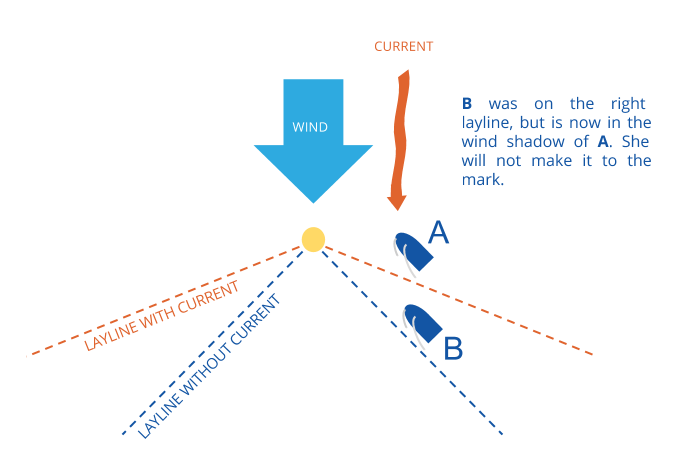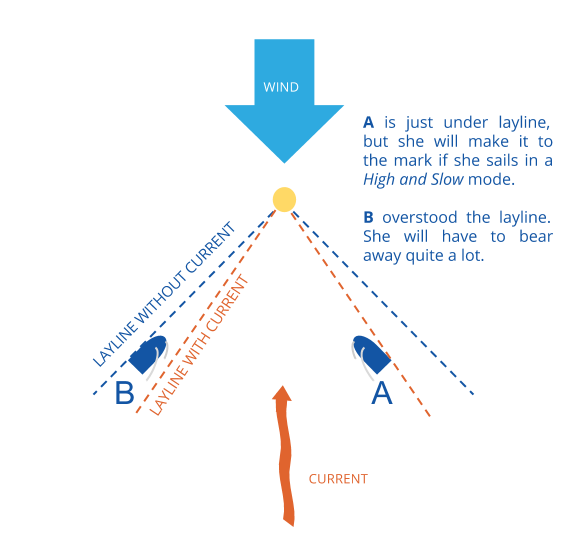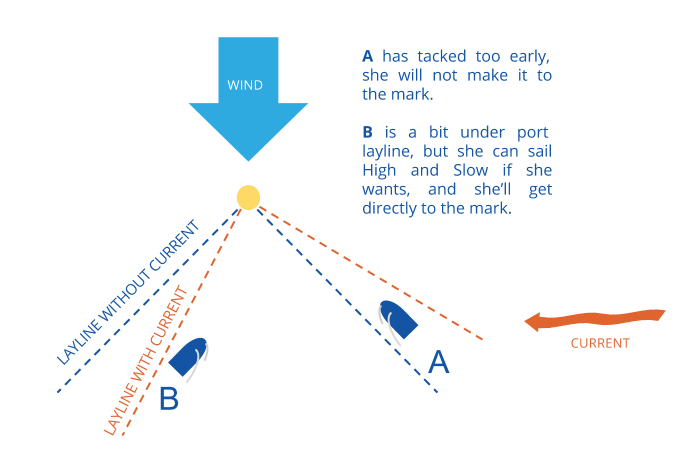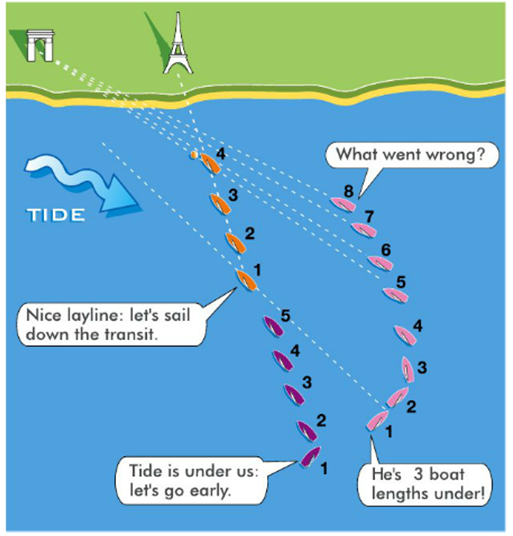The approach to the marks is always a really important moment of the regatta. Both overstanding the layline or, worst, tacking short of the layline can really mess up a whole regatta!
So, let’s see how the laylines are affected by the current and what is the best way to approach the mark. We will see 3 different situations: current coming down the course, current going up the course and current coming across the course. In all cases we talk about laylines going upwind.
Current coming down the course: Having the current pushing the boat always from the windward side means our sailing wind will head us and be lighter on both tacks (try to draw it if you are not convinced). This means our tacking angle is broader and, therefore, our laylines are broader. The current is actually pushing us back(away from the mark), so we will have to sail further upwind then the broad layline before tacking and approaching the mark. Many times you can see boats tacking just above the layline and slowly being drifted back. They start to try to sail in “high mode” (meaning, a tighter angle to the wind) trying to get to the mark but it makes the situation even worst! When a boat sails “high mode” it slows down; we know that the more we slow down, the more the current affects us. We have the same problem if we are good on the layline and a boat tacks just in front of us. We start to sail in dirty wind and to slow down. This is not a big deal if there’s no current, but if we have current coming down the course slowing down means being pushed to leeward and, therefore, losing the layline and the mark.

Current going up the course: Having the current pushing the boat always from the leeward side means our sailing wind will lift us on both taks. This means the laylines will be narrower. The current is pushing us close to the mark. This means that, even if we slow down for some reason, the current will keep us on the layline or even push us over it. This means, from a tactical point of view, it’s better to stay in the center of the course as much as we can to avoid the risk of overstanding the laylines! The other good news is that, if we tack short, we can do a little luff up close to the mark just to get around it; it’s not ideal but the current will allow us to do it.

Current coming across the course: this type of current creates a windshift. If the current is coming from the left of the course, the wind veers; otherwise, it backs. The layline rotates as they do with a normal windshift. But it’s not just this. We have always to consider how the current affects our course as well: the layline sailing into the current will be much narrower than the layline sailing away from the current. This is clear just watching the figure and looking at where the current is pushing the boat. In the example on the starboard layline the current pushes us to overstand the line. This means we can tack earlier. On the other hand, on the port layline, the current pushes us back into the center of the course.

 In all these situations a little trick we can use is to take a fixed bearing of the mark and an object on land. This will allow us to understand if the course we are sailing is good enough for the mark or if we are going to high or too low and, therefore, we will be able to minimise the losses. In the figure there is an example of cross tide layline and two boats taking a bearing and the third boat overstanding the layline by far.
In all these situations a little trick we can use is to take a fixed bearing of the mark and an object on land. This will allow us to understand if the course we are sailing is good enough for the mark or if we are going to high or too low and, therefore, we will be able to minimise the losses. In the figure there is an example of cross tide layline and two boats taking a bearing and the third boat overstanding the layline by far.
